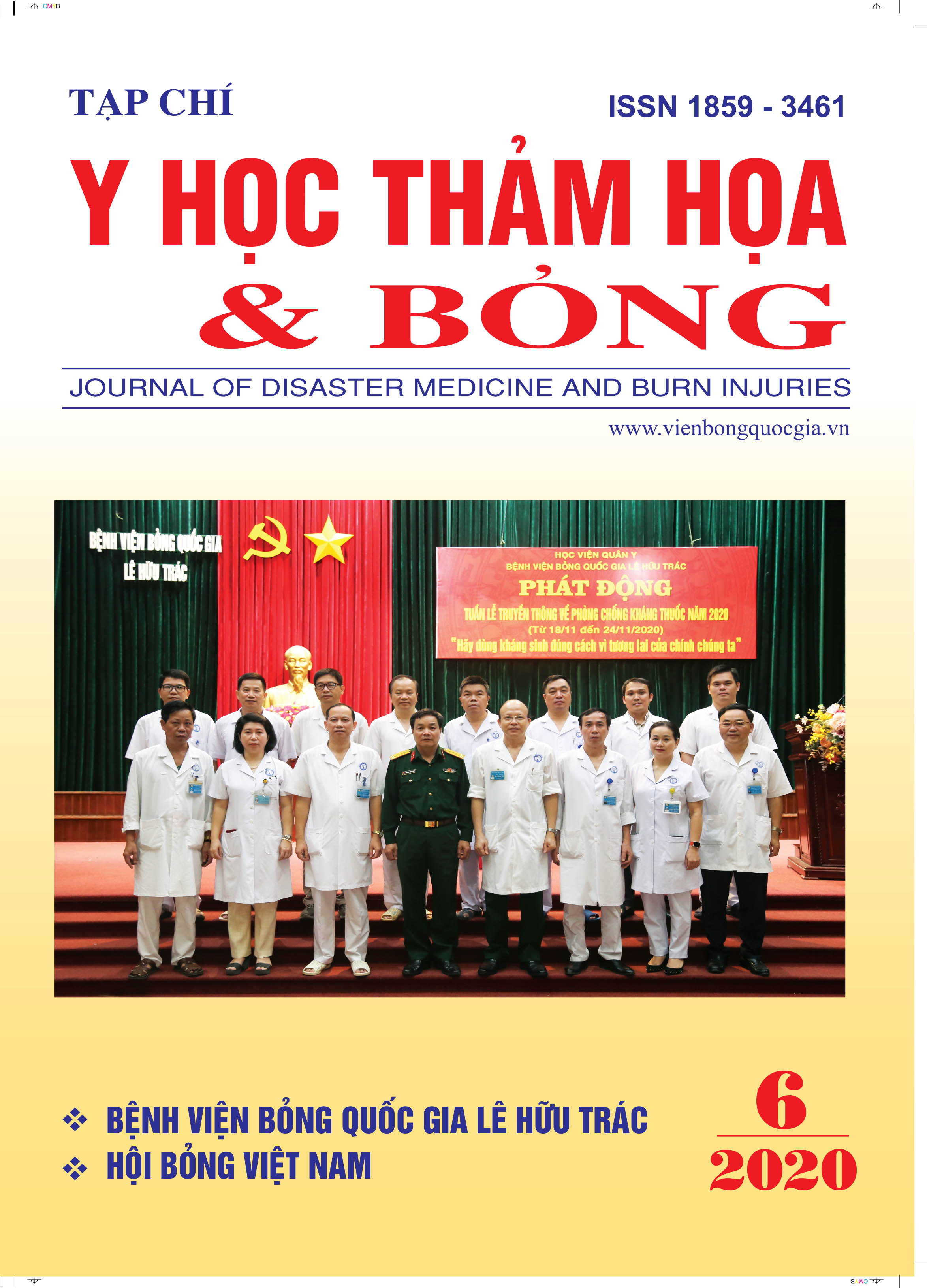The effectiveness of platelet-rich plasma (PRP) on the chronic wound healing process: A descriptive longitudinal study at the Wound Healing Center of National Burn Hospital
Nội dung chính của bài viết
Tóm tắt
Objective: We aimed to characterize the chronic wound response to Platelet-rich Plasma therapy (PRP).
Subjects and methods: We performed a descriptive longitudinal study at the Wound Healing Center of National Burn Hospital, from May 2019 to May 2020. Thirty patients with 33 chronic wounds were was injected subcutaneously inside and around the periphery of the chronic wound. We assessed the wound bed, wound size at the time of PRP injection and the first, second and third week of follow-up.
Results: After PRP treatment, the wound size reduced significantly compared to before the experiment, wound beds were cleaner and had filled with granulation tissue. Re-epithelialization appeared at the wound edge.
Conclusion: In addition to PRP therapy had a beneficial effect on wound healing of the chronic wound.
Chi tiết bài viết
Từ khóa
Chronic wound, platelet-rich plasma, granulation, epithelialization
Tài liệu tham khảo
2. Greer N, Foman N, Dorrian J, et al. Advanced wound care therapies for nonhealing diabetic, venous, and arterial ulcers: a systematic review. 2012. VAESP Project #09-009.
3. Martinez-Zapata MJ, Martí-Carvajal AJ, Solà I, et al. Autologous platelet-rich plasma for treating chronic wounds. Cochrane Database Syst Rev. 2012; Issue 10:Art. No.: CD006899. doi:10.1002/14651858.CD006899.pub2.
4. Aminian B, Shams M, Karim-Aghaee B, Soveyd M, Omrani GR. The role of the autologous platelet-derived growth factor in the management of decubitus ulcer. Arch Iranian Med. 1999;2:98-101.
5. Steed DL. Clinical evaluation of recombinant human platelet-derived growth factor for the treatment of lower extremity diabetic ulcers. Diabetic Ulcer Study Group. J Vasc Surg. 1995;21(1):71-81.
6. Obolensky VN, Ermolova DA, Laberko LA, Semenova TV. Efficacy of platelet-rich plasma for the treatment of chronic wounds. EWMA J. 2014;14(1):37-41.
7. Anitua E, Aguirre JJ, Algorta J, et al. Effectiveness of autologous preparation rich in growth factors for the treatment of chronic cutaneous ulcers. J Biomed Mater Res Appl Biomater. 2008;84(2):415-21.
8. Crawford F, Inkster M, Kleijnen J, Fahey T. Predicting foot ulcers in patients with diabetes: a systematic review and meta-analysis. QJM. 2007;100(2):65-86.
9. Tzeng YS, Deng SC, Wang CH, et al. Treatment of nonhealing diabetic lower extremity ulcers with skin graft and autologous platelet gel: a case series. Biotechnol Res Int. 2013; Article ID 837620:9.
10. Knighton DR, Ciresi KF, Fiegel VD, et al. Classification and treatment of chronic nonhealing wounds: Successful treatment with autologous platelet-derived wound healing factors (PDF). Ann Surg. 1986;204:322-30.
11. Martin P. Wound healing - aiming for perfect skin regeneration. Science. 1997;276:75-81.
12. Kakudo N, Kushida S, Ogura N, Hara T, Suzuki K. The use of autologous platelet-rich plasma in the treatment of intractable skin ulcer. Open J Reg Med. 2012;1:29-32.
13. Lacci MK, Dardik A. Platelet-rich plasma: support for its use in wound healing. Yale J Biol Med. 2010;83(1):1-9.
14. Frykberg RG, Driver VR, Carman D, et al. Chronic wounds treated with a physiologically relevant concentration of platelet-rich plasma gel: a prospective case series. Ostomy Wound Manage. 2010;56:36-44.


